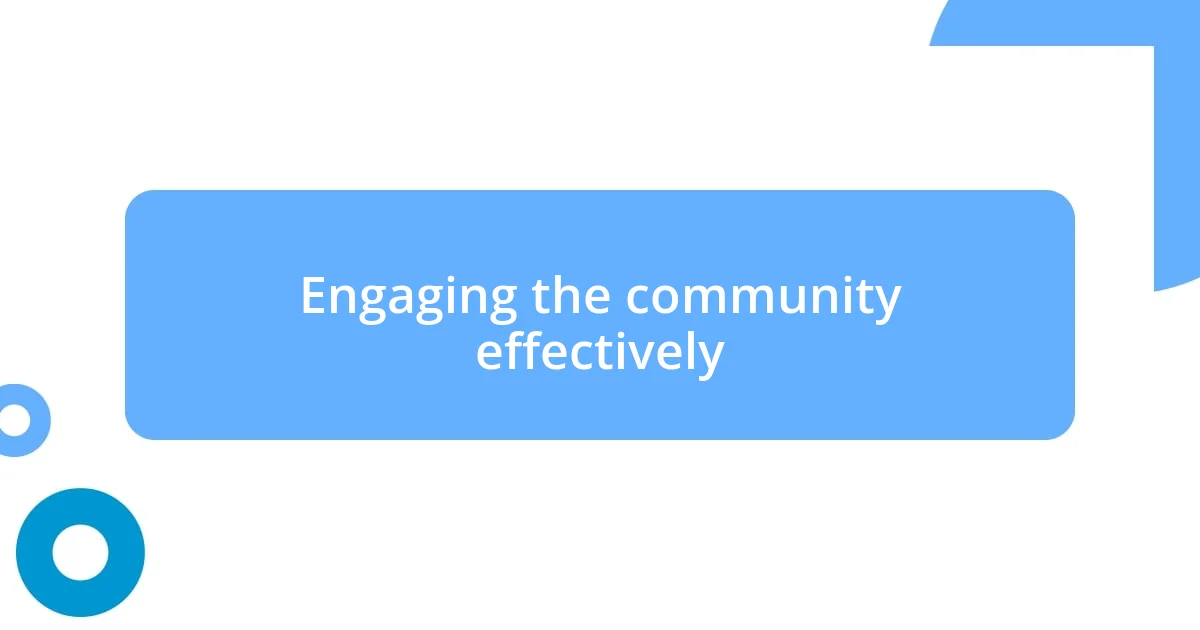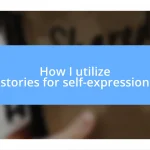Key takeaways:
- Successful protests rely on unity, a clear message, and strategic planning to amplify impact and engagement.
- Social media significantly enhances outreach and mobilization, allowing for rapid dissemination of information and community building.
- Adapting strategies to current events and combining traditional and modern methods is essential for maintaining relevance and effectiveness in activism.

Overview of protest strategies
Protest strategies come in various forms, each designed to convey a message and evoke change. I’ve seen first-hand how a simple sit-in can create a ripple effect, drawing attention in surprising ways. Have you ever experienced a protest that shifted your perspective? The power of people coming together, making their voices heard, is truly transformative.
One widely used strategy is direct action, where individuals take immediate steps to address perceived injustices. I remember attending a rally once, and the sheer energy of the crowd ignited a passion in me that felt electric. It makes me wonder—what motivates someone to step into that space of vulnerability and fight for a cause? The emotional weight of these actions often speaks louder than words alone.
Another important approach is the strategic use of social media to mobilize supporters and amplify messages. I’ve witnessed campaigns that started with a single tweet, sparking nationwide discussions. Isn’t it fascinating how technology can empower grassroots movements? This blend of digital and physical strategies illustrates the adaptability and persistence of protest, showing us that every action counts in the quest for justice.

Historical context of protests
Protests have deep historical roots, often emerging during times of social injustice or political turmoil. I find it fascinating how movements like the Civil Rights Movement in the 1960s used peaceful protests to confront systemic racism, paving the way for impactful change. This historical context reminds me of how people have always sought to unite and raise their voices against oppression, from the Suffragette marches for women’s rights to labor strikes demanding better working conditions.
- Protests in ancient history included actions like the Roman Plebeian secessions, where common citizens withdrew from cities to demand political representation.
- The Boston Tea Party of 1773 exemplified early American protest against taxation without representation, showcasing the power of collective action.
- In more recent history, the 1989 Tiananmen Square protests in China highlighted the risks and sacrifices individuals face when challenging authority.
These examples illustrate how protests have been an integral part of societal progress, often driven by a shared emotional goal of achieving dignity and justice.

Key elements for successful protests
Successful protests typically hinge on several key elements that work together to create maximum impact. Unity among participants is essential; I’ve often felt this collective spirit when joining a march. There’s something incredibly powerful in feeling that many people stand together for a common cause. It amplifies our individual voices, creating a chorus that resonates much louder than any one person can alone.
Another crucial element is a clear and focused message. I attended a protest once where the organizers had a simple yet powerful slogan that captured the essence of our cause. It struck me how that clarity helped people understand what we were truly advocating for, drawing in supporters from all walks of life. By keeping the message straightforward, we were able to unite a diverse audience under one banner, which made a world of difference in the impact we created.
Planning and strategic execution also play a critical role. I’ve experienced firsthand the importance of logistics in a successful gathering. From ensuring there are proper permits to orchestrating routes for marches, these details can significantly influence the outcome. It’s akin to preparing for a big event; the effort put into planning reflects on the day of action itself, ensuring participants can focus on the cause rather than unexpected hurdles that could derail our message.
| Element | Description |
|---|---|
| Unity | Collective spirit strengthens the protest’s impact. |
| Clear Message | A focused slogan unifies diverse supporters. |
| Strategic Planning | Proper logistics ensure smooth execution and focus on the cause. |

Engaging the community effectively
Engaging the community effectively is about connecting with individuals on a personal level. I remember attending a local forum where organizers encouraged everyone to share their stories. It was amazing to witness how those personal narratives fostered a deeper understanding of the issues at hand. When people feel heard, it creates a bond that goes beyond mere participation; it cultivates a shared commitment to the cause.
In my experience, leveraging local influencers can be a game-changer. When a respected community member spoke up during a rally, I felt the energy shift. Suddenly, those on the fence became more invested, inspired by someone they trusted. Have you noticed how one familiar face can often rally a crowd? It’s a reminder that community ties matter heavily in building momentum for any movement.
I find that interactive activities, like workshops or community discussions, can significantly enhance engagement. Once, I participated in a series of art-making sessions leading up to a protest, where we created banners that reflected our collective emotions. The excitement was infectious! Everyone felt a sense of ownership and creativity, transforming us from bystanders into active participants ready to amplify our message together.

Utilizing social media for outreach
Social media serves as a powerful tool for outreach, connecting countless individuals to a shared purpose. I’ve seen firsthand how a single tweet or post can gather support from around the globe. Isn’t it incredible how ideas can spread like wildfire online? One time, I shared a post about a local protest, and within hours, friends I hadn’t seen in years began discussing how they could contribute. It truly highlighted the potential of social media to not only inform but also mobilize.
Engaging visuals can capture attention and drive action. When I came across a striking infographic about climate change impacts last year, it prompted me to share it with my network. It’s fascinating how images can evoke emotional responses, compelling people to take part. Have you ever noticed how a powerful image can prompt conversation and encourage sharing? Social media thrives on this dynamic, allowing activists to convey their message vividly and effectively.
Hosting live events on platforms like Instagram or Facebook can create real-time engagement. I remember tuning in to a livestream during a solidarity march; it was amazing to see comments pouring in from viewers supporting the cause, even from afar. This not only builds a sense of community but allows those unable to attend in person to feel included. How rewarding is it to know that through social media, every voice has a chance to echo and inspire? By leveraging these platforms, we can reach a broader audience and enhance the unity that is so essential for impactful protests.

Measuring the impact of protests
Measuring the impact of protests can be quite complex, but I’ve learned that one vital indicator is the change in public discourse. After attending a climate change march, I noticed a significant uptick in conversations around sustainability in my community. Have you ever felt the shift in how people talk about critical issues after seeing them raised in a protest? It’s fascinating how these events can reshape narratives, pushing once-ignored topics into the spotlight.
Beyond conversations, tangible results like legislative changes often serve as a reflection of protest effectiveness. After participating in a local rally advocating for affordable housing, I watched with hope as our city council proposed new policies shortly after. It reminded me that our collective voices really can make a difference. Have you ever felt that mix of pride and disbelief when your efforts lead to real change? That feeling is both motivating and validating.
Another way to gauge impact is through community engagement post-protest. I remember how invigorated my group felt after our last march, leading to a series of follow-up meetings to discuss next steps. It was heartening to see new faces who hadn’t participated before, eager to join the conversation. Isn’t it striking how a single event can ignite a sustained commitment to activism? That persistent enthusiasm is a clear sign that the protest resonated and encouraged ongoing dialogue and action.

Adapting strategies to current events
Adapting protest strategies in response to current events is crucial for maintaining relevance and impact. I remember when a sudden change in legislation sparked outrage; my local group quickly organized a demonstration focused on that specific issue. Watching our strategies shift in real-time to address the urgency made me realize how vital it is to stay attuned to the news and public sentiment. Have you ever witnessed how swiftly a community can unite around a pressing concern?
I’ve also observed how combining traditional strategies with modern approaches can create a robust framework for action. During a recent blackouts protest, we not only rallied in person but also initiated Twitter threads to share stories of those affected. It was incredible to see how the blend of both methods brought substantial attention. Isn’t it empowering when you realize that diversifying your approaches can amplify your impact on issues that matter?
Another poignant moment for me was when we had to pivot our strategy due to health concerns during the pandemic. Transforming our in-person actions into a virtual campaign forced me to think creatively. I found myself working with others to create a series of online workshops that engaged our supporters while educating them on how to advocate from home. It was a humbling experience that illustrated how adaptability can lead to innovative solutions. How does embracing change spark new ideas within you?














